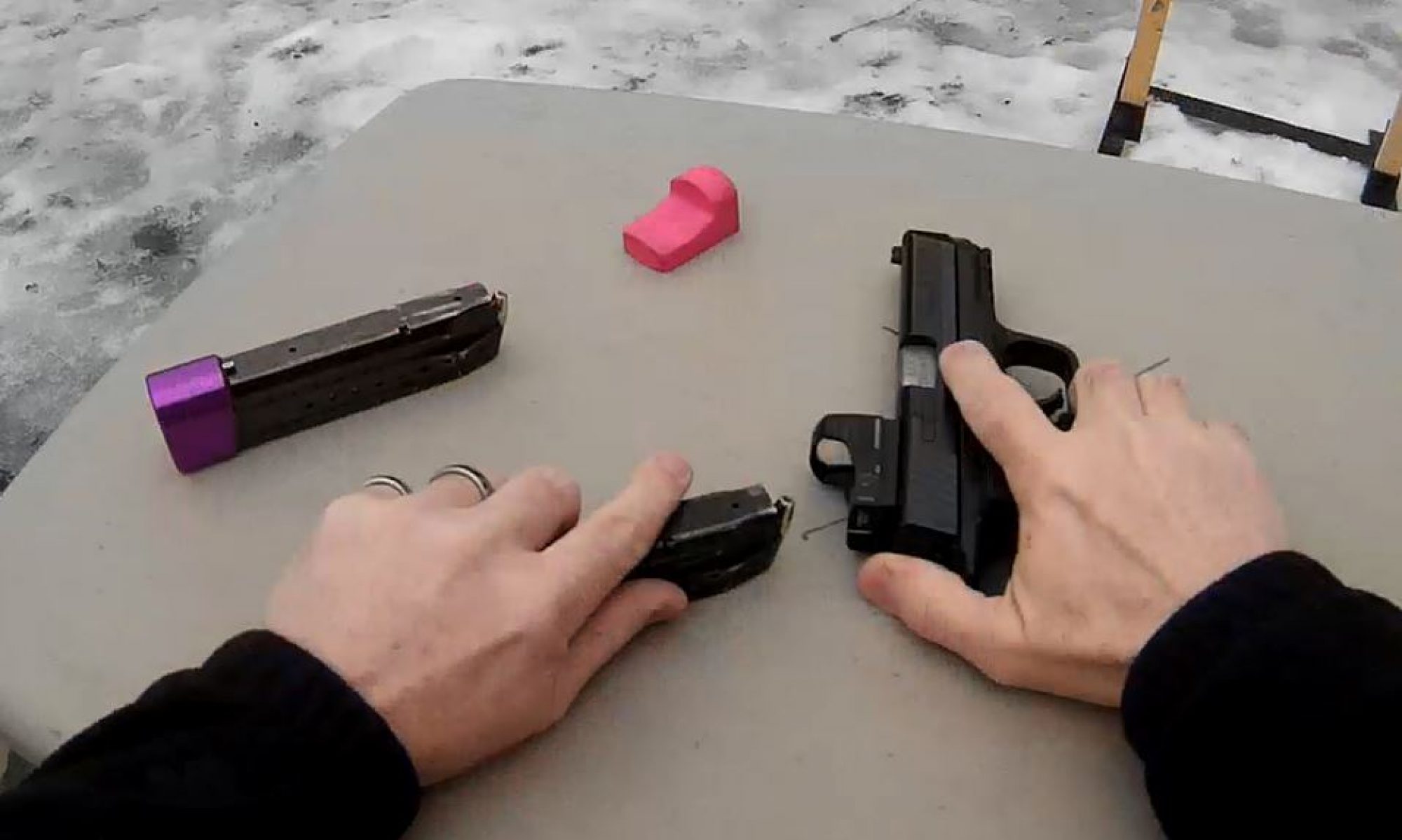With Ruger’s foray into the AR-15 market, many have taken notice. Some because Bill Ruger always said there was no reason for civilians to own “high-capacity” semi-auto rifles. Others because this seems like an awfully late arrival to the party. After all the noise died down we discovered that the rifle was in fact a very nicely built, well-appointed, great shooting gun. I tried shooting one twice and was very much impressed. When it came time  for a new AR-15 it was the obvious choice to me. Yes, I really wanted the Masada/ACR but we know what happened there.
for a new AR-15 it was the obvious choice to me. Yes, I really wanted the Masada/ACR but we know what happened there.
I got my SR-556 from a local dealer at a very good price then installed my Magpul CTR stock, GripPod forward vertical grip/bipod, sling mounts and the Aimpoint CompM3 and away we went. The gun is awesome. The weight at 8 lbs unloaded is a full pound heavier than my Bushmaster but this is to be expected with a piston system and a 10-inch quad rail. I think you get what you pay for with weight. This is “good weight”, so to speak since I would want a quad rail anyway and the 2-stage piston system is superb.
I don’t notice any difference in the recoil impulse from any other 5.56 AR-15. Also the inside of my buffer tube shows no signs of the dreaded carrier tilt problem. In fact I can’t see any markings at all in there. After about 1k rounds the gun still shoots beautifully. My accuracy using the CompM3 is dependent on my vision, which is simply not that great. I can get 2″ groups at 100m from the bench, which frankly is better than I’ve ever done before with those optics. At 25m all five shots touch so I’m very happy. With a scope I suspect one could do much better at distance.
The gun runs very cool and clean. Yes, I can touch the bolt carrier immediately after a mag dump. The upper receiver, bolt carrier group and the chamber appear almost as if the gun hasn’t been fired. This is just amazing and very welcome compared to the sooty mess that is the normal direct gas impingement system experience. The only “gotcha” is that the gas block, piston and regulator valve do in fact get quite dirty. The good news there is that they are very easy to disassemble and clean. This contrasts sharply with the usual AR cleaning regimen.
I personally do not like the Troy Industries rail covers as they make the quad rail too big. I really like the Ergogrips Low Pro rail covers for taming the quad rail. They make it really comfortable to grip, they protect your weak hand from getting cut on the rail edges and they cover up those annoying white indexing labels on the rails.

I also am not a big fan of the standard M4 buttstock. I hate when they rattle and I don’t like the lock release because it is so obtrusive. The Magpul CTR is the best stock I’ve ever used for a multi-use carbine. It locks up solid, there is nothing on which to snag clothing or other material, it has a built-in quick-release sling mount and it is beautiful to look at. This is essential kit for any AR that I own.
The Hogue grip is just wonderful. I really like how sticky it is. I have not noticed it catch on clothing or tactical vest but it does provide a very solid connection between my strong hand and the rifle. I would not change it.
As I’ve already mentioned the Troy battle sights are outstanding. I had originally intended to swap them for Magpul MBUS sights but when I tried the Troys I was hooked. Also, they are just as light as the MBUS sights. No-brainer there.
So my initial impressions of the SR-556 are very positive. It is everything I love about the platform without the thing I disliked the most: the DI system. I expect I will have this rifle as a permanent member of the collection.
UPDATE Fall 2010: I’ve lately switched to the Eotech 5.12 over the CompM3. Also, I neglected to mention the sling, which is detailed here.
